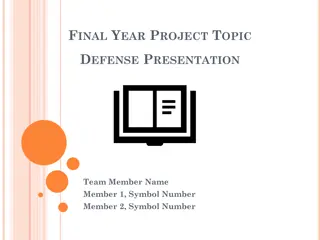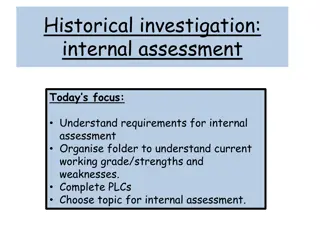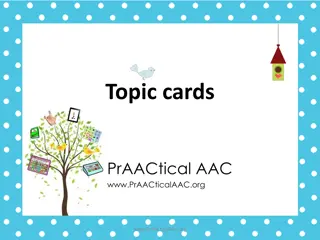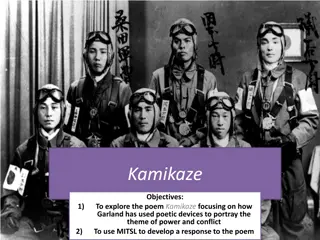
Effective Organisational Structure and Strategy Implementation Tactics
Explore the dimensions of organisational structure, including authority hierarchy, centralisation, specialisation, and more. Dive into case studies like Reed Exhibitions to discuss corporate and business level strategies, challenges faced, and future concerns. Learn about formal organisational structures and controls for successful strategy implementation.
Download Presentation

Please find below an Image/Link to download the presentation.
The content on the website is provided AS IS for your information and personal use only. It may not be sold, licensed, or shared on other websites without obtaining consent from the author. If you encounter any issues during the download, it is possible that the publisher has removed the file from their server.
You are allowed to download the files provided on this website for personal or commercial use, subject to the condition that they are used lawfully. All files are the property of their respective owners.
The content on the website is provided AS IS for your information and personal use only. It may not be sold, licensed, or shared on other websites without obtaining consent from the author.
E N D
Presentation Transcript
Agenda Lecture 8 Strategy Implementation II Group Case Analysis: Reed Exhibitions Strategy Implementation Discussion (Student Led)
Group Case Analysis Reed Exhibitions In groups discuss the following: Which topics that we have covered so far this semester are applicable for this case study? What corporate level strategy/ies have they utilised in this case? What business level strategy/ies have they utilised in this case? Were these the best strategies to use? Why/why not? What are some of the main issues and challenges Reed Exhibitions will be likely to face in the future?
Learning Objectives Know the key dimensions that describe formal organisational structures including the degree of specialization, formalization. centralization, and levels of authority. Draw an organisation chart to represent different types of business and corporate-level structures used by multi-business organizations. Understand the role that the lateral (horizontal) organization plays in successful implementation of strategy. Identify the differences between strategic and financial controls, and between feedback and feedforward controls. Describe bureaucratic, clan, and process controls. List the steps companies can take to control organisational crises.
Dimensions of Organisational Structure Hierarchy of Authority Degree of Centralisation Complexity Specialisation centralised decentralised Formalisation Professionalism
Functional Structure General Manager Highly centralised Marketing HR Finance Operations R&D/Eng
Functional Structure Strengths Economies of scale Functional expertise and specialization Best if few products or services Weaknesses Slow response time Hierarchy overload Sometimes poor coordination across departments Can restrict view or broader firm goals
Geographic and CustomerBased Structures Vice President Administrative Departments Western Region Eastern Region Marketing Operations Operations Marketing Vice President Administrative Departments Economy Travelers Luxury Travelers Marketing Marketing Operations Operations 8 decentralised
Geographic / Customer Structures Strengths Suited to fast change in an unstable environment High levels of client satisfaction High coordination across functions Best in larger firms with several products or markets Weaknesses Loss of economies of scale within functional areas Some redundancy of functions Loss of in-depth functional specialization May lead to poor coordination across product lines or markets
Product Based Structure Example
Product Based Structures Advantages All support functions based on product, manufacturing to customers requirements; R&D to global customers' wants and needs; Integrated and centralised world vision. Disadvantages Duplicates functions; Domestic managers may lack requisite experience; coordination and learning across product groups more difficult.
Project Matrix Structure General Manager Marketing Manager R&D Manager Operations Manager Support Functions Project Manager A Project Manager A Project Manager A
Project Matrix Structure Strengths Achieves coordination Flexible use of human resources Works well in medium-sized firms with multiple products Weaknesses Dual authority can cause frustration and confusion Excellent interpersonal skills needed Additional training can be expensive Time consuming, frequent meetings Great effort to maintain power balance
Corporate Structures Multidivisional CEO Corporate Staff Division VP Division VP Division VP Few businesses compared to the other corporate structures Moderate/low relatedness across divisions Moderate/low need for coordination across divisions Financial synergy may be available across divisions and some operational synergy (although limited) only to the extent that the divisions are related to each other
Corporate Structures Matrix CEO and Staff Division 1 Division 2 Marketing Operations Development Any number of businesses Highly related businesses so people can easily transfer Very high level of coordination is required Many opportunities exist for operational synergies (for innovation, to reduce costs, or serve multiple markets well) Example?
The Lateral Organisation Communication and coordination between the departments/divisions horizontally To increase flexibility and speed Shares skilled staff across hotels
Your Turn In groups create an organisational chart that shows what you think is the structure of Staywell Holdings. www.staywellgroup.com You will need to make assumptions about how the business operates. Prepare this as a poster/PowerPoint slide to present back to the class.






















